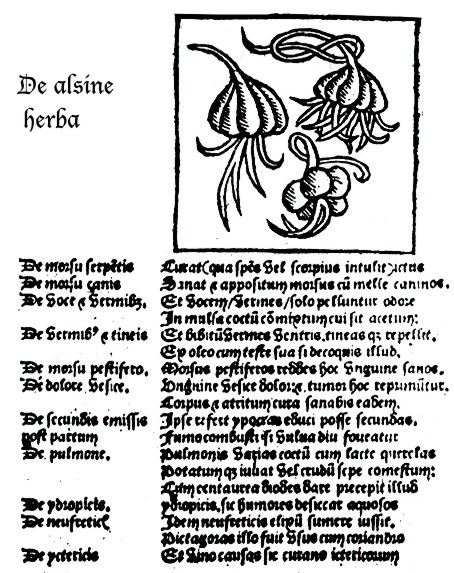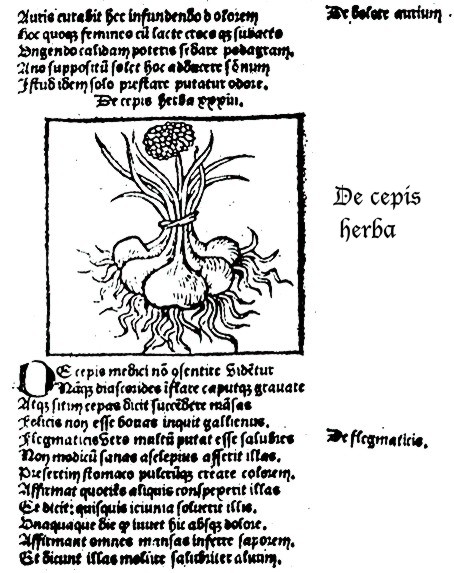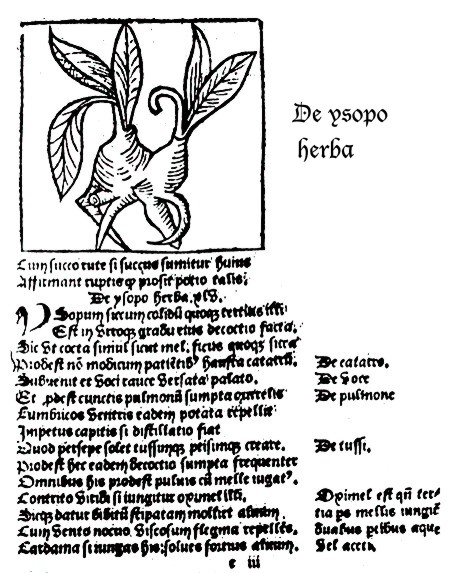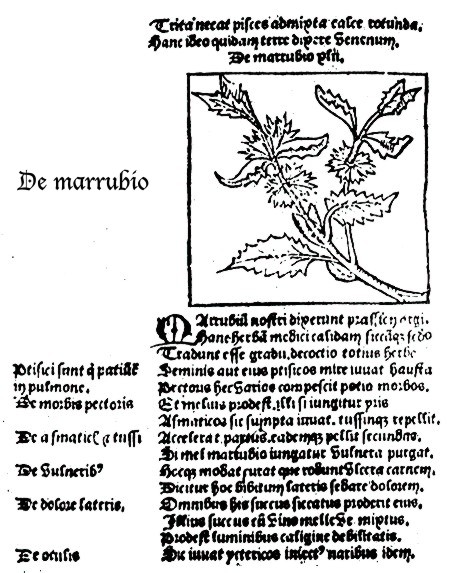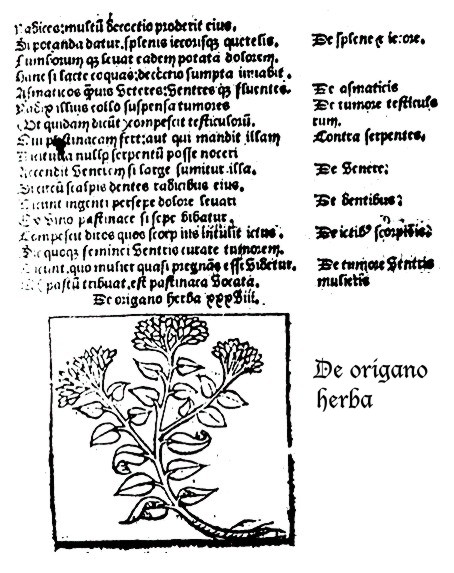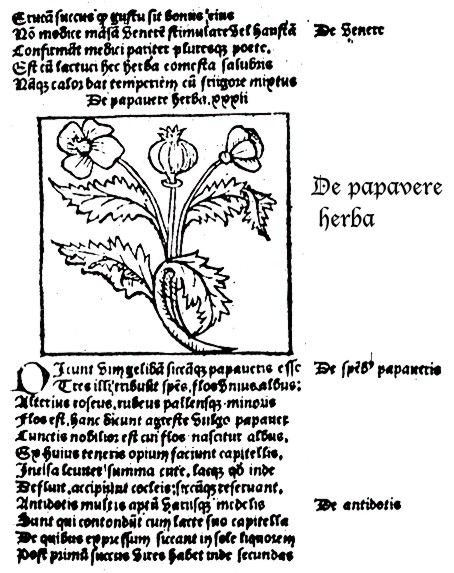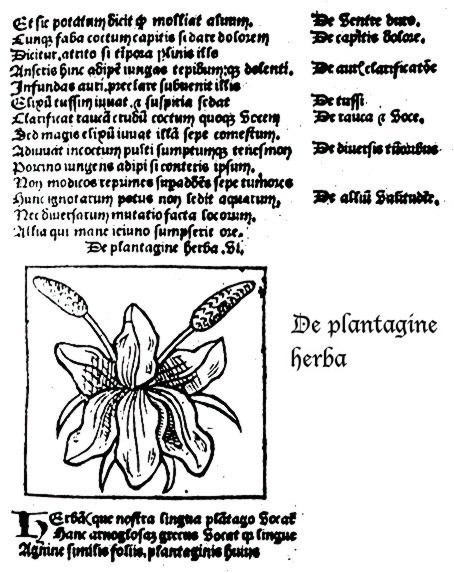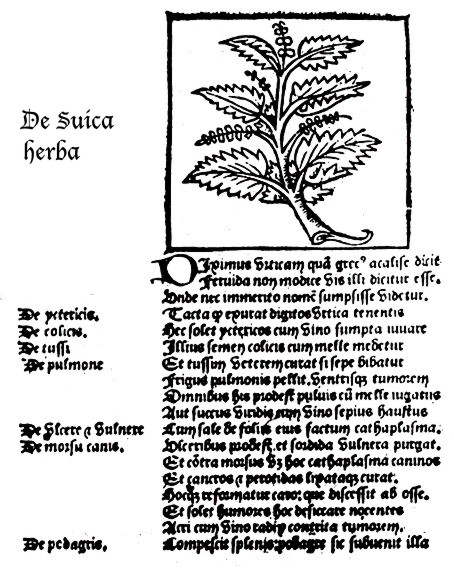Lessico
Floridus
Macer
Odo de Meung - Odo Magdunensis
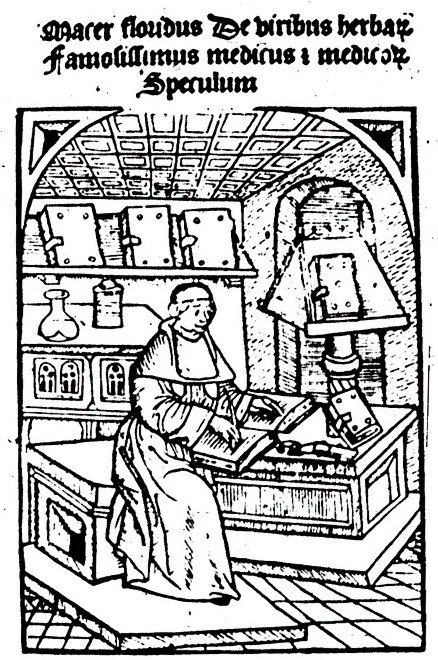
verosimilmente la prima versione in stampa del 1477
Macer's text De viribus herbarum. Herbarum varias qui cognoscere
vires. (Paris:
Bacquelier, ca. 1515) was one of the most important and popular general botanical texts of the
medieval period, and its influence on botanical pharmacy and therapeutics is
said to have stretched from the 11th century to the Renaissance. It describes
the medicinal properties of 77 herbs and is written in Latin hexameter, a
poetic verse form that was most likely employed as a mnemonic device for
physicians and midwives. The herbal is supposed to have been first written
between 1070 and 1112, with the first printed versions appearing in 1477.
Despite the attribution of the work to Aemilius Macer![]() ,
a Roman poet and naturalist, the text is generally believed to have been
authored by Odo de Meung, a medieval physician, who based his work on the
writings of Pliny
,
a Roman poet and naturalist, the text is generally believed to have been
authored by Odo de Meung, a medieval physician, who based his work on the
writings of Pliny![]() ,
Galen
,
Galen![]() ,
Dioscorides
,
Dioscorides![]() , and
Hippocrates
, and
Hippocrates![]() . (www.lib.ncsu.edu)
. (www.lib.ncsu.edu)
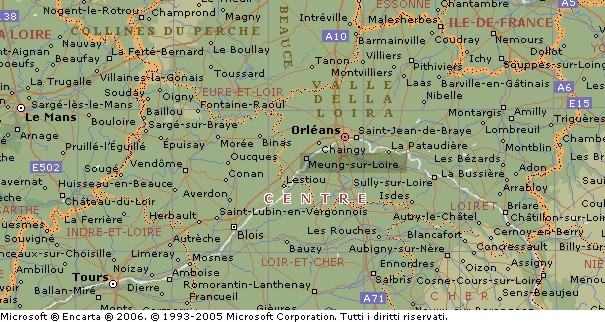
The text titled De Viribus Herbarum (On properties of plants) has been traditionally attributed to Odo de Meung (Odo Magdunensis), who is believed to have lived during the first half of the 11th century and was from Meung on the Loire. Recent research has shown, however, that the De Viribus Herbarum was probably written in an earlier version, perhaps during the tenth century in Germany. The text was further expanded, including new data from the translation of Arabic texts into Latin in Salerno from the end of the 11th century onward. If this is the case, this text is good evidence of the continuity of scientific activity in the Middle Ages: its most ancient parts come from a period when there was a revival of interest in botany and a recovery of the classical tradition, while the most recent additions integrate the contribution of the Arabic world. (http://huntbot.andrew.cmu.edu)
